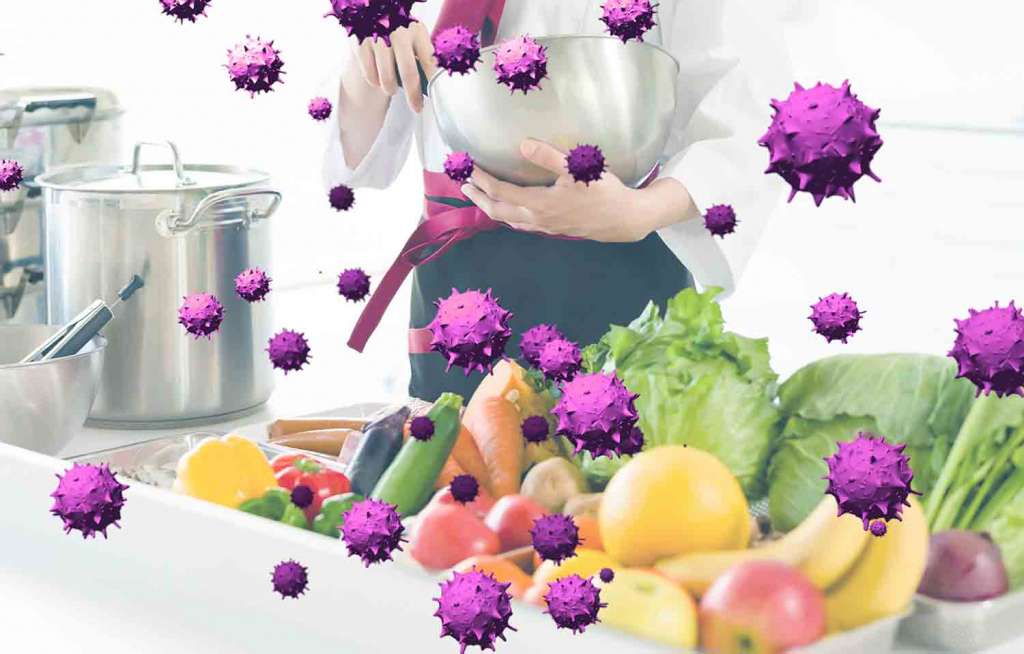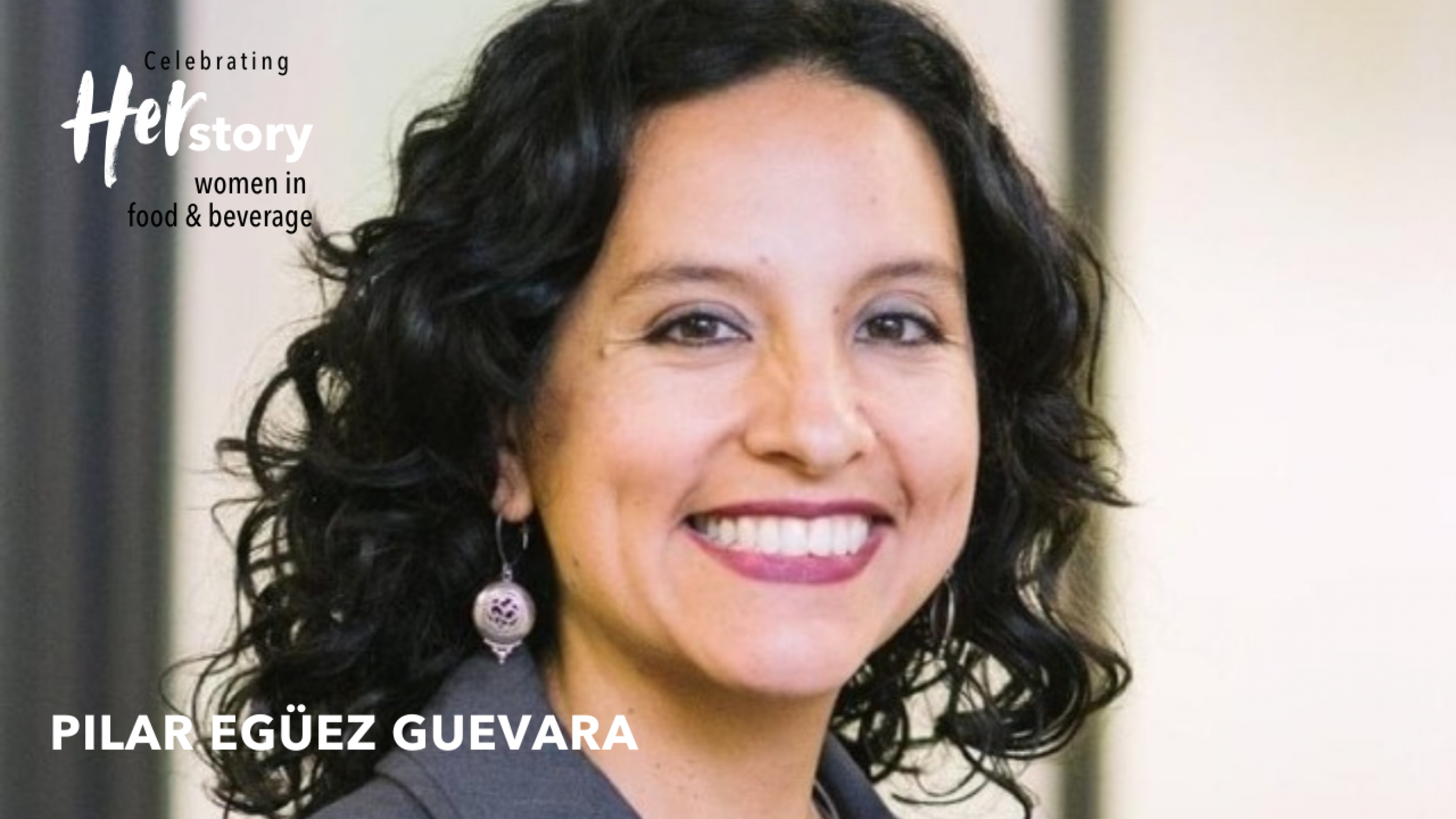Professor and food safety expert Ben Chapman tackles the tough topic of how to keep meeting participants safe from COVID contagion, from buffets to food festivals.
 Ben Chapman is a professor, food safety specialist and extension specialist at North Carolina State University who does research and extension and outreach in all areas of food safety — foodborne illness outbreaks, norovirus, e. coli, salmonella, hepatitis A — the pathogens that are transmitted through food that are important to public health in the U.S. Much of his research focuses on consumer food safety — handling what people do in their homes — as well as restaurant food safety and institutional food safety.
Ben Chapman is a professor, food safety specialist and extension specialist at North Carolina State University who does research and extension and outreach in all areas of food safety — foodborne illness outbreaks, norovirus, e. coli, salmonella, hepatitis A — the pathogens that are transmitted through food that are important to public health in the U.S. Much of his research focuses on consumer food safety — handling what people do in their homes — as well as restaurant food safety and institutional food safety.
I recently caught up with Ben to talk about food safety, specifically as related to events, during the COVID-19 era. Here is some of what we talked about.
I recent saw that an event being held at a convention center later this fall is working with its food service provider to prepackage all the food for attendees. How far do we need to go to ensure the food we serve at events is safe?
We really haven’t seen food itself being a risk factor for COVID-19 transmission or other respiratory diseases. While the epidemiology so far indicates that the most common way people get COVID-19 is from being around others who have symptoms, touching surfaces that individuals who are sick have touched or coughed on also can be a factor, which using pre-packaged food can help eliminate.
But really, we’re not in a situation where we should be holding events for the next several months. The risk of transmission from being around other individuals who are sick is not sustainable right now. Push it out six months from now, maybe, and my recommendation would be to look at the high-touch areas and risk factors associated with buffet lines, including just having all those people lined up with their plates. Staggering those lines will become more important, as will pre-wrapped foods and having portable hand-washing stations at the end of the buffet line. Although we have seen shortages of hand sanitizer, which could become an issue. For those who are concerned about having access to hot water for hand washing, water temperature is actually not a factor in the effectiveness of removing pathogens from your hands. We want more handwashing, not less, so don’t let water temperature be a barrier.
For buffets, the easiest way to maintain safety is to have staff provide the service, rather than self-serve, for the same reason — I can manage staff handwashing much more easily than individual attendees. We also have issues with allergens, those who need gluten-free and vegetarian options. Having a staff person manage the serving is probably best.
So many have an optimism bias — “We’ve been running this event for 30 years and we’ve never had a problem.” Please don’t do that!
Going with pre-packaged food could be prudent though, especially if it eliminates the common use of utensils. I don’t have a good recommendation around common-use utensils and spoons right now.
Then you have to think about how to space out all those rounds banquet-style. A room that could fit 1,000 people now may only be able to accommodate 300 for social distancing reasons, and also because we need to space out around the buffet.
What other best practices related to food safety should meeting organizers ask of food service providers at convention centers and food festival venues?
One of the benefits of traditional institutional food services and catering is that it’s all regulated in terms of cleanliness, hand washing, cleaning and disinfecting. These are not new concepts to the world of food service for events. COVID-19 isn’t our first rodeo — we’ve seen outbreaks of salmonella, such as the one at a Chicago food festival 10 or 12 years ago that led to more than 1,000 illnesses.
I’m all for educating people about food safety, such as taking a food manager certification course like the one we run at N.C. State called Safe Plates for Food Managers. I’m all for more education about what could go wrong, what questions to ask. How have they cleaned and sanitized the workspace? How do they monitor the health of their staff? How often is the food service provider cleaning and sanitizing buffet utensils? Education will arm them with the ability to ask the right questions.
Going from self-serve to having servers can be expensive, and hotels and convention centers are going to pass that cost along to meeting organizations. Also, many of these facilities also are short-staffed right now, which makes this harder to do. I’ve done events where we have 10 double-sided buffet lines to feed 7,000 people quickly, so it also may mean readjusting timelines when you can’t do self-service. Also, a switch to vertical buffets — it’s all going to affect how we design meetings moving forward.
You have to look at your business model, at least in the short term, to see what needs to be adjusted. And keep in mind that the situation is still fluid, depending on the way this outbreak shakes out, so you have to be ready to readjust as needed.
Transparency around sourcing also is an issue. We want the food to be local and sustainable, and also safe.
You also have to ask your suppliers what they are doing in terms of food safety when it comes to sourcing. Do your suppliers participate in a state agricultural audit, or benchmark standards for third-party audits from groups such as the Global Food Safety Initiative? What information can you share with me that demonstrates what you and your vendors are doing in terms of food safety?
I want to hear the details, not, “We’re a small farm and we’ve never had a problem, don’t worry about it.” Tell me, from an agricultural production standpoint, what you’re doing to ensure that the water you use for irrigation is clean. How are you supporting your employees when it comes to health and sanitation? Do you have them sign a contract that says if they are sick with certain symptoms, they can’t work? Do you provide some sort of support for them if they can’t work, and provide training and hand-washing facilities? There are no magic answers, but just engage in that conversation.
Also, ask the hotel to provide its health inspection scores for its various restaurants and catering facilities. Ask the local health department if they have any information about that vendor — do they have problems with hand washing or food temperature control? You also can work with folks like me, food safety consultants, which are available at most land-grant universities in the U.S.
How could COVID-19 potentially impact food donations?
Remember, food has not been identified as a transmission risk factor for this virus as of now. We have to be careful about not just, for example, throwing food donations out if they come from areas with a lot of COVID-19, which would lead to food waste and further food insecurity issues. Some companies are ahead of the game, such as MGM flash-freezing food to give to food banks. Meeting professionals who want to donate leftover food worry about being sued. Yes, the Good Samaritan Act is there to protect you, but even though COVID-19 currently is not thought to be passed through food and beverage, it does make us more conscious of how to donate leftover food safely in terms of time and temperature controls.
I’m part of a project in Charlotte, N.C., that walks food service operators through the food code parameters on freezing and then monitoring the temperature through transport and distribution. We absolutely can do that in a safe way to prevent food-borne pathogens. With COVID-19, we know that hand washing around packaging is important as well.
And our food service providers need to be willing to share food safety information related to both potential pathogens and also food allergies.
We all are also concerned about reducing waste, for example by providing five-gallon water dispensers instead of individually bottled water.
From a virus- or food-borne pathogen standpoint, transmission from a dispenser is a very low risk. I wouldn’t use high-touch taps, but single-use taps may be OK. It’s possible that someone who is ill could touch the dispenser, and someone else could then touch it and and the pathogen ends up being transferred to their mouth, but the risk is very low. Norovirus is a totally different situation; it could be problematic for that. It may be safer to have a staff person serving the water. I think we’ll see more automatic water dispensers as we move forward.
…we estimate we have about 48 million cases of food-borne illnesses a year… About half of those are norovirus linked to food settings. If I were to pick a pathogen to worry about as a meeting planner, first would be norovirus, and second would be hepatitis A
What is the prevalence of salmonella and norovirus right now?
The general answer is that we estimate we have about 48 million cases of food-borne illnesses a year, and that number tends to remain pretty static year over year. About half of those are norovirus linked to food settings. If I were to pick a pathogen to worry about as a meeting planner, first would be norovirus, and second would be hepatitis A, which has been a growing epidemic in the U.S. over the past three or four years. Hepatitis C, salmonella and e. coli also are an issue.
For COVID-19 though, the biggest risk factor is being around other people who may be sick. You need to design the event to minimize that contact, and tell people, “If you’re sick, don’t come to my event.”
Do you have any emergency response suggestion for meeting planners, in addition to asking venues if they stock epinephrin and how long the response time is for EMTs to get to the venue?
I’m in the business of thinking about everything that could go wrong. The first step is to realize that that there could be a problem. So many have an optimism bias — “We’ve been running this event for 30 years and we’ve never had a problem.” Please don’t do that!
Think through what you would do for any given situation. Do you know how to contact the local health department? Do you know who to call if all of a sudden you have individuals falling ill from chemical contamination? If two weeks after your event people begin falling ill, do you know how to contact other individuals who came to your event or festival? If you don’t, how can you contact them — maybe by using social media? The businesses and events that don’t survive major emergencies are the ones who haven’t really thought it through ahead of time.
LISTEN to the interview with Ben to learn more and hear directly from him on the Eating at a Meeting Podcast:




